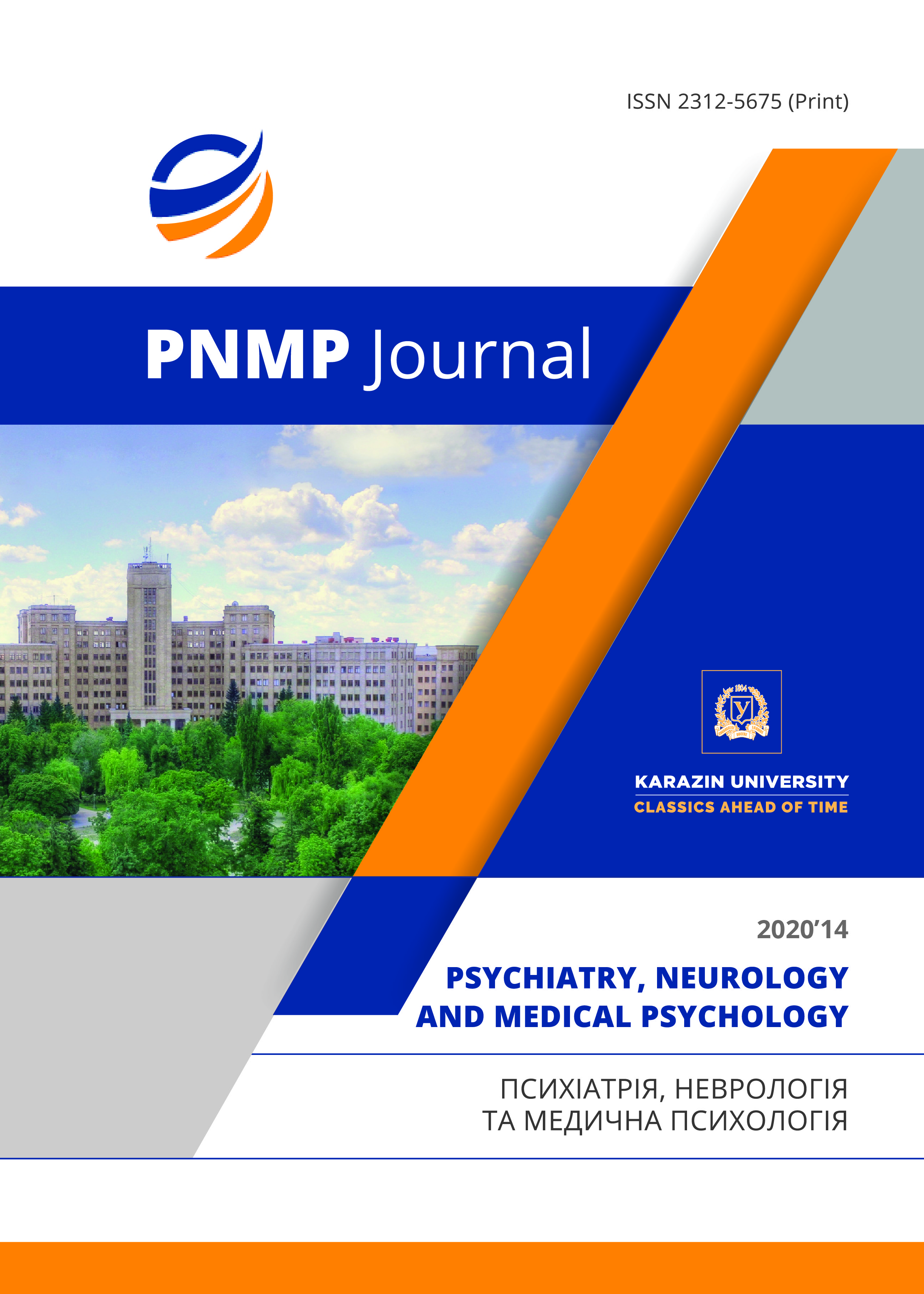Psychopathological peculiarities of vascular dementia with different localization of pathological focuses
Abstract
Relevance. Vascular dementia, caused by various organic lesions, volume and location of organic damage to brain tissue, manifests itself in a wide range of concomitant neuropsychiatric symptoms. However, despite the obvious link between the location of vascular lesions and the patient's psychopathological symptoms, the effects of the physical characteristics of the brain damage that caused the vascular dementia and the corresponding neuropsychiatric symptoms remain poorly understood.
The aim of the study was to investigate psychopathological features of cognitive impairment in patients with vascular dementia depending on the location of the lesion.
Contingents and methods. 157 people with a diagnosis of vascular dementia were examined, divided into five groups: group 1 — 22 people with localization of the pathological process in the frontal lobe; group 2 — 18 patients with temporal lobe lesions; group 3 — 17 patients with parietal lobe lesions; group 4 — 15 patients with occipital lobe lesions and group 5 — 68 people with total lesions.
Results: It was found that the lesion of the frontal lobes is characterized by a high frequency of euphoria and hallucinatory phenomena, as well as minor manifestations of apathy and anxiety; lesion of the temporal lobe — the highest frequency and severity of apathy; parietal lesions — low frequency of anxiety combined with its high intensity; occipital lesions — intense depressive experiences (in cases where they occurred), total brain damage — the lowest prevalence and intensity of delusional feelings, irritability and agitation.
Conclusions. A comprehensive study of patients with vascular dementia identified specific to each localization of brain lesions spectra of neuropsychiatric symptoms, which creates the necessary conditions for early application of differentiated therapeutic and rehabilitation measures and, accordingly, to improve the quality of patients life in this category.
Downloads
References
Matsuoka T., Ismail Z., Narumoto J. Prevalence of mild behavioral impairment and risk of dementia in a psychiatric outpatient clinic. Journal of Alzheimer's Disease. 2019. Preprint. pp. 1-9. DOI: 10.3233/JAD-190278
Linnemann C., Lang U. E. Pathways Connecting Late-Life Depression and Dementia. Frontiers in Pharmacology. 2020. Vol. 11, p. 279. PMID: 18979948
Creese B. et al. Mild behavioral impairment as a marker of cognitive decline in cognitively normal older adults //The American Journal of Geriatric Psychiatry. 2019, Vol. 27, no. 8,pp. 823-834. DOI: 10.1016/j.jagp.2019.01.215
Fischer C. E., Agüera-Ortiz L. Psychosis and dementia: risk factor, prodrome, or cause? //International psychogeriatrics. 2018. Vol. 30, no. 2, pp. 209-219. DOI: 10.1017/S1041610217000874
Poulin S. P., Bergeron D., Dickerson B. C. Risk factors, neuroanatomical correlates, and outcome of neuropsychiatric symptoms in Alzheimer’s disease //Journal of Alzheimer's Disease. 2017. Vol. 60, no. 2, pp. 483-493. DOI: 10.3233/JAD-160767.
O’Brien J. T.,Thomas A. Vascular dementia // The Lancet. 2015. Vol. 386, no. 10004. P. 1698—1706. DOI: 10.1016/S0140-6736(15)00463-8.
Voloshshuk D. A. Psychotherapeutic support of patients with vascular dementia. Archives of Psychiatry. 2016. Vol. 22, no. 2, pp. 126-127. http://nbuv.gov.ua/UJRN/apsuh_2016_22_2_41 [In Ukr].
O'Connor C. M. et al. Longitudinal change in everyday function and behavioral symptoms in frontotemporal dementi. Neurology: Clinical Practice. 2016. Vol. 6, no. 5, pp. 419-428. DOI: 10.1212/CPJ.0000000000000264
Van Langenhove T. et al. Comparing longitudinal behavior changes in the primary progressive aphasias. Journal of Alzheimer's Disease. 2016. Vol. 53, no. 3, pp. 1033-1042. DOI: 10.3233/JAD-160010
Odinak M. M. et al. Modern possibilities of neuroimaging in the differential diagnosis of cognitive impairment // Neurology, neuropsychiatry, psychosomatics. 2012. no. 2 [In Rus].
Singh T. D. et al. Neuropsychiatric symptoms in primary progressive aphasia and apraxia of speech. Dementia and geriatric cognitive disorders. 2015. Vol. 39, no. 3-4, pp. 228-238. DOI: 10.1159/000369062.
Harris J. M. et al. Co-occurrence of language and behavioural change in frontotemporal lobar degeneration. Dementia and geriatric cognitive disorders extra. 2016. Vol. 6, no. 2, pp. 205-213. DOI: 10.1159/000444848.
Kruskal W. H., Wallis W. A. Use of ranks in one-criterion variance analysis. Journal of the American Statistical Association. 1952. Vol. 47, no. 260, pp. 583–621.




